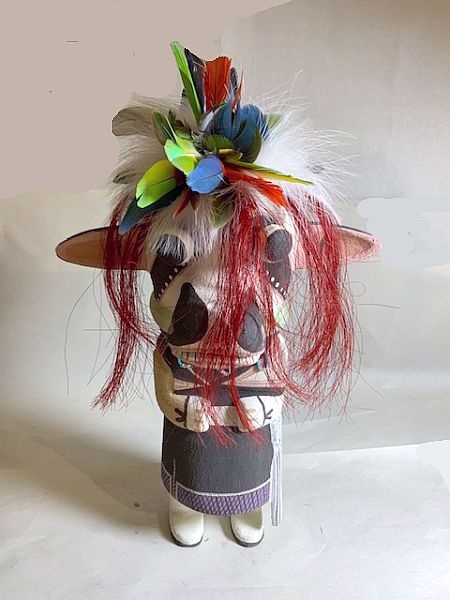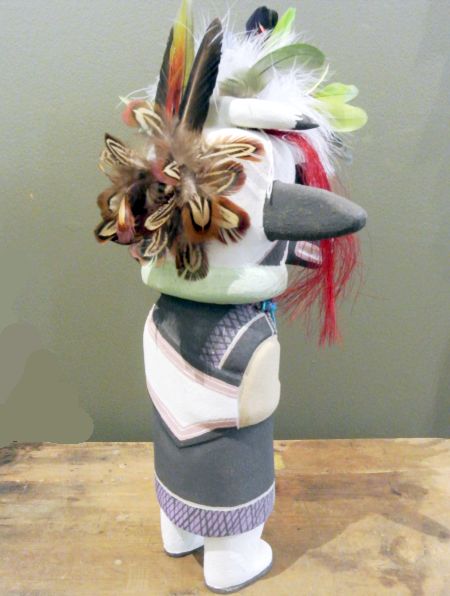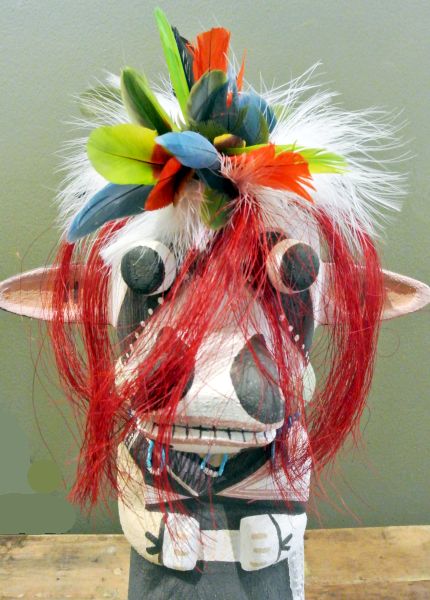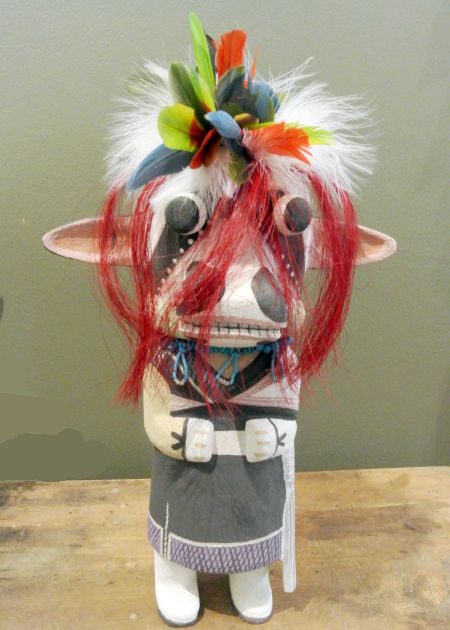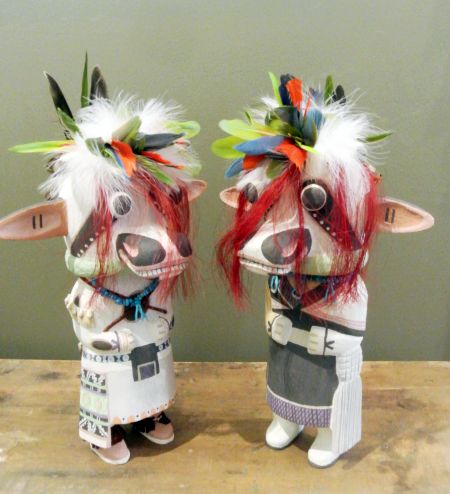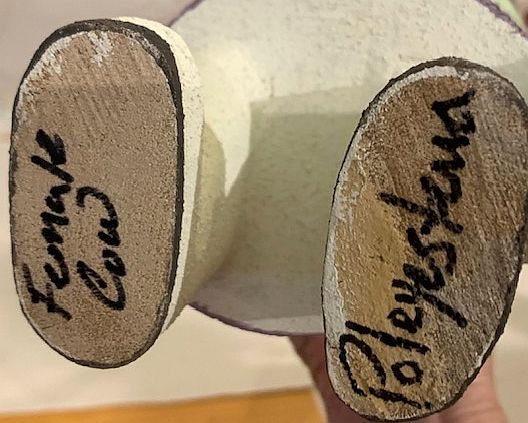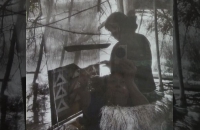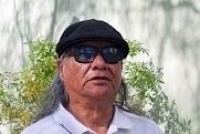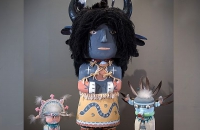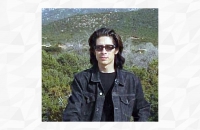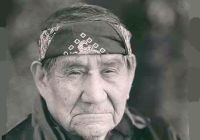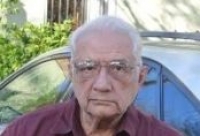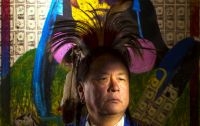K701 Cow Kachina
Female Cow Kachina by master Hopi kachina carver Poleyestewa. The 16” kachina is carved from cottonwood root in the traditional Hopi manner.
The Wakas'katsina is the Cow Kachina. He first appeared in the Hopi pantheon of Katsinas around 1900 and has appeared regularly since then.
He represents an animal spirit messenger to the Rain gods. The songs and dance movements are prayers for rain, and are symbolic of animals' self-sacrifice in supplying food to sustain life.
(Shown with K701, Male Kachina @ $1200.00)
Call for Shipping
About the artist
Poleyestewa
Poleyestewa is a Hopi Artist who carves only in the traditional style, a style that is more similar to that of kachinas of the early 1800’s: arms tucked close to the body and well thought out adornment. This differs from the intricately carved kachinas that are heavily carved with exaggerated motion.
A 3rd Mesa Hopi artist from the Hopi village of Hotevilla, this noted carver is deeply respectful of the traditions of his people. Poleyestewa's kachinas are carved from dead cottonwood root and are in the same style used by the Hopi people for past centuries. His tools are a flint knife and a potter’s polishing stone. Using old techniques, he makes natural vegetal dyes and mineral paints made of copper, choke cherry berries, alkaline, jet and coal ash for color and adding a temper to resist fading over time. With angola goat hair, doeskin and duck feathers, he completes the kachina. These katsina are the type still carved for Hopi children today and can stand alone or be hung on the wall.
He is a well-known carver whose work is enthusiastically sought after by collectors around the world. Barry Goldwater collected pieces by Poleyestewa’s father which he donated to the Heard Museum. Other collectors include: President George Bush, Lorne Greene, Wayne Newton, Larry Hageman, R.C.Gorman, the Bass Brothers of Texas, the late gallerist Elaine Horwich and Anselm Bischoff of Bischoff’s Gallery. Mr. Poleyestewa maintains close relationships with many collectors: one Wyoming rancher opens his property to Polyestewa for harvesting the cottonwood, another collector raises exotic birds such as macaws and parrots and sends him naturally shed, legal feathers.
Poleyestewa did not intend to follow in his father’s footsteps as a carver. He completed his studies at a Bureau of Indian Affairs school in Oklahoma then went on to Arizona State University to study communications and broadcast journalism. In a circuitous route he was lead back to his carving and his roots. None of his 3 sons carve and one is a broadcast journalist. Poleyestewa now enjoys the attention of his 13 grandchildren.
Bischoff’s Gallery is proud to represent these wonderful dolls and the gallery has the largest single display and offering of the 3 foot to 4 foot kachinas as well as his smaller dolls.

